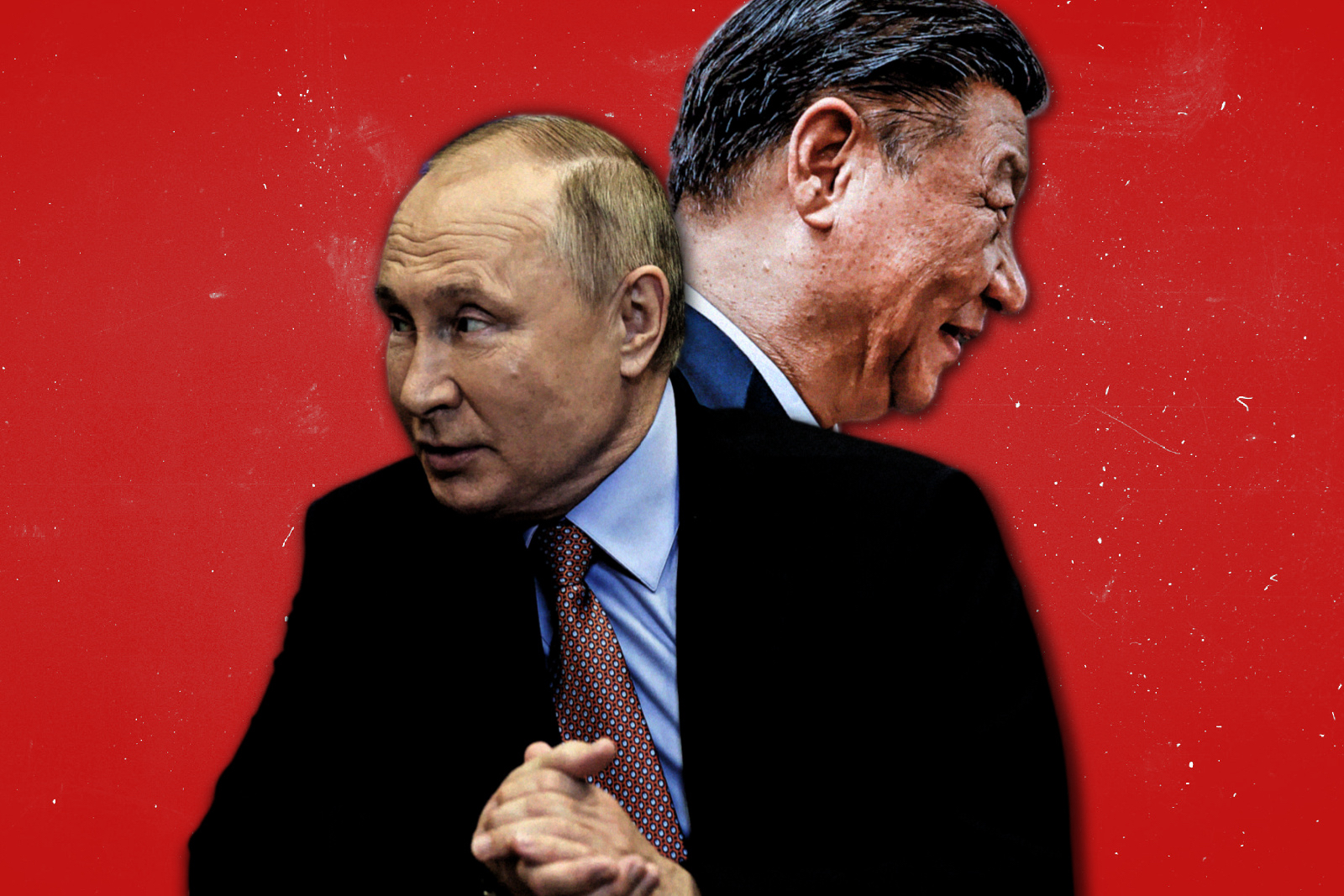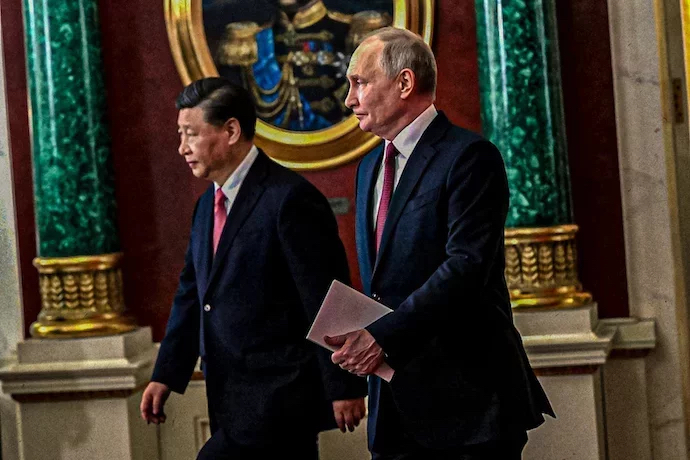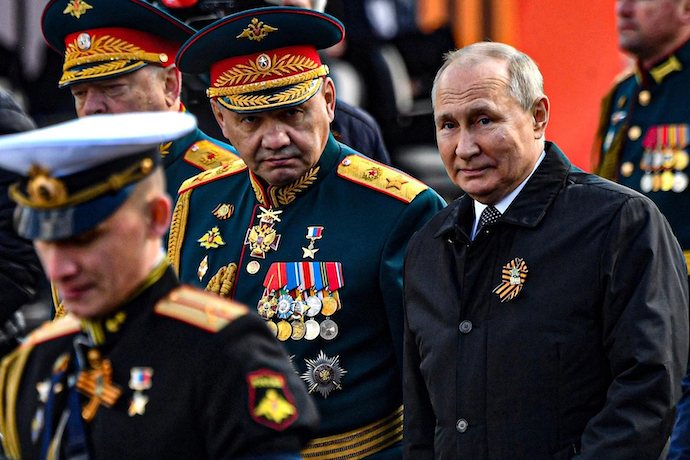
With Russia Weakened, China Sets its Sights on Vladivostok
In February 1950, Soviet Premier Joseph Stalin and Chinese Communist leader Mao Zedong signed the Sino-Soviet Treaty of Friendship and Alliance. An alliance that was supposed to last for 30 years, collapsed a decade later in spectacular fashion after Beijing denounced Moscow for betraying communism, and the Soviet Union reciprocated by ending all economic assistance to China.
Fast forward 73 years, Russian President Vladimir Putin and Chinese President Xi Jinping are trying to reconstruct this early friendship. However, much like before, this relationship is complex and multifaceted. As a start, the balance of power is now reversed. In 1950, the USSR was vastly more capable, both militarily and economically, than China, who today is by far the more dominant power.
In April, Beijing offered diplomatic support to Russia by breaking with its policy of neutrality in territorial disputes and asserting its rejection of Japan’s claim to the four disputed southern Kuril Islands – a chain of volcanic islands located in the Pacific Ocean, stretching northeast from Hokkaido in Japan to the southern tip of Russia’s Kamchatka Peninsula.
The Soviet Union had taken the four southern Kuril Islands from Japan at the close of World War II. The islands are strategically positioned, dividing the Pacific Ocean from the Sea of Okhotsk, creating a crucial point of exit for the Vladivostok-based Russian Pacific Fleet.
In retaliation to Japanese sanctions, Russia halted negotiations for a peace treaty involving the Kurils Islands and even carried out military drills, aimed at fending off an invasion, near the islands. The fact that Chinese President Xi Jinping broke with traditional neutrality in bilateral disputes is evidence of the development of ties between the two nations.
China has also provided support to Russia in its time of economic isolation. Bilateral trade between the two nations has surged 41.3%, hitting $73.15 billion this year alone. China has provided Russia with an outlet for much of its oil exports and in May the two nations signed an agreement to supply natural gas to China via the Far East Gas Pipeline. China has also begun exploiting the “dual-use products” loophole in the Western sanction regime and has begun exporting military-grade equipment, including drones and optics equipment to Russia, further contributing to warming relations between the two powers.

These geopolitical developments have coincided with one of the most significant but frequently overlooked developments in Sino-Russian relations. In Northeast Asia, where China, North Korea, Japan, and Russia converge, is the Russian city of Vladivostok. Vladivostok represents a key part of Russia’s geographical structure and serves as a crucial transportation hub and commercial route, connecting all of Europe to Asia, as well as being the headquarters of the Russian Pacific Fleet.
China has acquired access to the Vladivostok port, in what appears to be a quid pro quo of sorts, with Vladivostok becoming operational as a Chinese transit port on June 1. Considered the main gateway to the Pacific Ocean for Russia, the port sees container traffic of nearly one million twenty-foot equivalent units annually. Access to the port would allow China greater access to the Pacific Ocean and help facilitate cross-border transit for shipments in northeastern China.
Access to the port will reduce the land transport distance from the cities of Jilin and Heilongjiang to the sea, greatly improving their manufacturing competitiveness by cutting costs and helping China strengthen its industrial supply chains. China’s General Administration of Customs stated the move was consistent with Beijing’s “national strategic plan to re-vitalize north-east China’s industrial base and facilitate the cross-border transport of domestic trade goods with the use of overseas ports.”
“With the opening of Vladivostok port, China and Russia can engage in more cooperation in port construction and logistics, further enhancing the economic vitality of northeastern China and development in the Russian Far East,” says Song Kui from the Contemporary China-Russia Regional Economy Research Institute.
The Chinese auto industry is expected to be a major beneficiary of the deal due to the Russian auto industry’s decline following Western sanctions. With China’s EV exports up 93%, reaching 380,000 units, and with general Chinese auto exports rising 58% so far this year, overtaking Japan, the industry is primed for growth which Vladivostok is expected to facilitate.
However, while it is easy to view these developments as evidence of a robust Sino-Russian relationship, China’s actions should be viewed contextually. Despite the platitudes and assurances of mutual support, China has been reluctant to give Russia access to advanced missiles, drone technology superior to Iran’s (Russia’s primary supplier of drones), or further expansions of natural gas and pipeline agreements.
China’s influence in the Russian Far East also consistently evokes unfavourable sentiments in Russia. According to a survey conducted in 2017 by the Russian Academy of Sciences, over 30% of Russians perceive China’s growing presence as “expansionist.” Additionally, 50% of respondents expressed concerns about China posing a threat to Russia’s territorial integrity, while 30% of participants believed China’s policies could jeopardize their nation’s economic progress. These adverse local perceptions have occasionally led to delays in proposed Chinese investment ventures like the Chinese-funded water bottling facility in the Irkutsk region, scheduled for development, which was halted following local protests in 2019.

Additionally, China is stepping up its security and economic footprint in Central Asia in ways that may increasingly be perceived through a competitive lens by Moscow. In 2021, it was announced that China would construct an outpost for police special forces in Tajikistan which is home to Russia’s largest overseas military base and is a member of the Russia-led Collective Security Treaty Organization (comparable to NATO for former Soviet states).
Economically, China has also replaced Russia as the largest trading partner for Kazakhstan, Kyrgyzstan, Tajikistan, and Uzbekistan, reducing Russia’s ability to wield its economic influence in the region. In May, China invited the presidents of these states to a grand foreign policy and diplomatic festival. The invitation specifically failed to include Russia and represented growing Chinese influence within former Soviet states which Russia considers within its sphere of influence. Such a blatant omission of Russian inclusion illuminates the relationship’s growing asymmetries and demonstrates the fragility of the broader friendship.
Russia is also wary of China’s Arctic ambitions due to its own significant interests in the region. Around 20% of Russia’s land lies within the Arctic Circle, encompassing 24,000 km of coastline and 2.5 million people. Under Putin, Russia has revitalised its Arctic focus by increasing its military presence and renovating 50 Soviet-era military sites.
China, though lacking Arctic territory, aims to be a “near-Arctic state” and in 2018 it proposed a “Polar Silk Road” aligned with its Belt and Road Initiative. Collaborations between China and Russia on Arctic energy and infrastructure projects have also faced challenges. Russia resisted China’s Arctic Council observer status and in 2020 charged a Russian Arctic expert with treason for sharing classified data with China.
Considering this, what may seem on the surface to be cooperation between China and Russia in Vladivostok could be viewed more cynically. China has made no secret of wanting the far eastern region around Vladivostok back. Having only been in Russian hands since 1860, when the area was ceded by China to Russia as part of the Treaty of Peking, the region represents 20,000 square miles of previously Chinese territory, which China still calls by its original name ‘Haishenwai.’
The foundations for a realignment of the Russia-Chinese frontier are deep. China and Russia have both complained and occasionally come to blows, over their shared border for centuries. Prior to the Russian Revolution, ethnic Chinese residents constituted more than 40% of the labour force in the region. According to a 1907 census, around 62,000 Chinese residents lived in the far eastern region of Russia, highlighting their significant presence in the area. The actual number was probably higher as many Chinese did seasonal cross-border work as day laborers.
At that time ethnic Russians were probably a minority, which helps explain why Stalin chose the inhumane but expedient policy of mass expulsions to China – to guarantee Russian numerical superiority within the region. Today, however, the demographics are shifting, with Russia degrading the region’s societal identity by resettling Ukrainians who have been forcibly removed from their homeland into the area.
Additionally, Russia has been draining its eastern defences to replace men and material lost in Ukraine. This extensive border region has never been so lightly defended by either side and it won’t be long before the ethnic Russian population is once again outnumbered by ethnically Chinese Russians.
Interstate ‘shared use agreements’ like the sort concerning Vladivostok, are difficult to revoke. If Russia wishes to limit or remove Chinese access to the port in the future, it may struggle to do so absent diplomatic consequences. Beijing certainly is aware of this and likely proposed the agreement with further entrenchment of its influence in the region as its long-term intention.
With the official regional demarcation resolution, for a centuries-old border conflict that predates the official existence of both nations, only being signed by the two powers in 2008, it is not unforeseeable that China could move to nullify current agreements and seek that Russia return Vladivostok. Given the changing demographics, such a move could be framed as the simple absorption of ‘residents who speak and think like us,’ a logic that Putin has not been afraid to use in his justification for invading Ukraine.
Such a territorial addition could further cement Xi Jinping’s position of strength at the head of the Chinese Communist Party and alleviate some of the pressure to capture Taiwan in the immediate future. In fact, the Chinese claims on Vladivostok and the surrounding area are more historically rooted than the CCP’s more recent claims over Taiwan.
However, Vladimir Putin is an ‘expander of territory’ not a relinquisher. Any agreement for the wilful return of such a vital part of Russia’s eastern geopolitical structure is extremely unlikely. But Russia’s vast resources and lightly defended eastern border coupled with Russian military losses in Ukraine means Vladivostok should not be ignored as a potential flash point for future geopolitical tensions.

